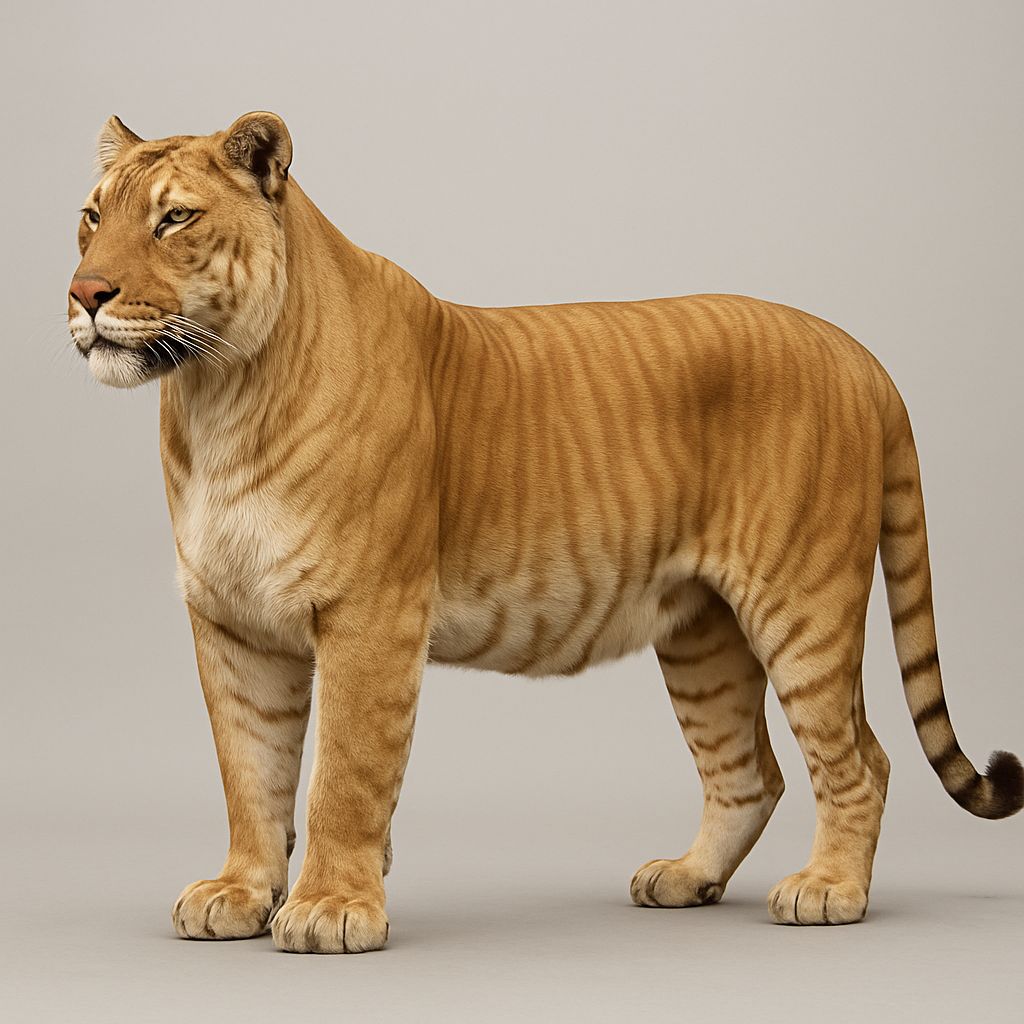
Today we will discuss about the largest cat of the world. Can you imagine that the world’s biggest cat is bigger than some forest animals? Today in this article, we will tell you about some such cats which will leave you astonished. Which are the world’s biggest cats and how can we take care of them? Can we keep them at our home? How much does it cost to raise them?
In this article, you’ll discover the biggest and largest cats ever and what makes them so special. Get ready to be amazed by these purr-fect giants!
Table of Contents
“Largest Cat” – Weight vs. Length
“When we talk about the ‘largest’ cat, many things come to our mind like its length, width, height etc. Different cats hold different records. Some are incredibly long, like the Maine Coon Stewie, while others, like Hercules the liger, are simply massive in both weight and size.
Hercules The Liger – Largest Cat Of The World
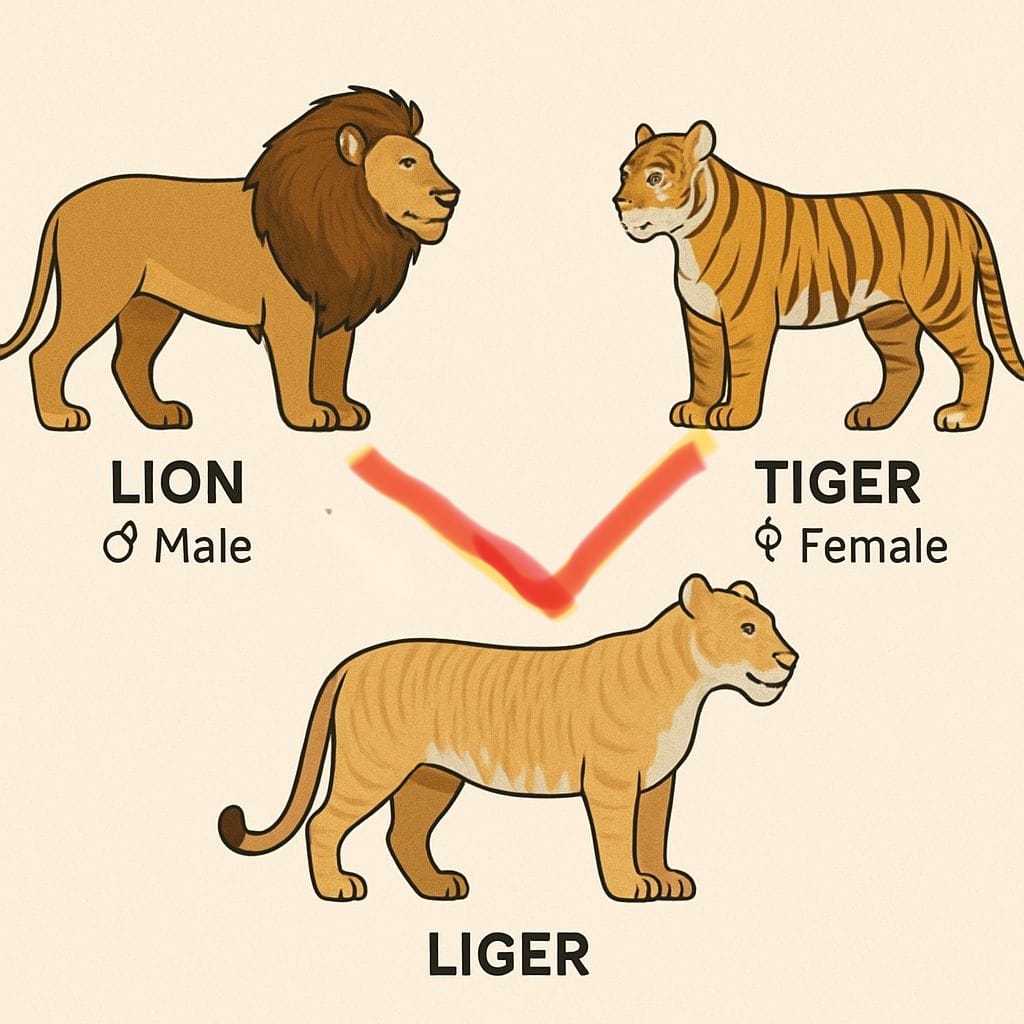
| Main Features | Details |
|---|
| Name | Hercules |
| Type(combinaton) | Liger (Male Lion × Female Tiger Hybrid) |
| Origin place | Myrtle Beach Safari, South Carolina, USA |
| Weight(Approximate) | Around 900 pounds (410 kg) |
| Height | Near about 4 feet (1.2 meters) at the shoulder (on all fours) |
| Length | Mostly around 11 feet (3.3 meters) from nose to tail |
| Life Span | 15–20 years (in captivity) |
| Special Features | Lion’s mane, Tiger’s stripes, Strong and muscular, very rare |
| Diet | Need Of High-protein diet (mostly raw meat like beef and chicken) for better growth |
| Behavior | Mostly Friendly and social in captivity, if well trained by professional handlers |
Who Is the Largest?

👉 Hercules the Liger is the largest cat in the world.
Even though the Siberian tiger is the largest naturally occurring wild cat, Hercules is much bigger due to being a hybrid of a lion and a tiger, combining the size traits of both.
🐾Hercules the Liger vs. Siberian Tiger
| Feature | Hercules the Liger | Siberian Tiger |
|---|---|---|
| Type | Hybrid (Male Lion + Female Tiger) | Wild Species (Panthera tigris altaica) |
| Habitat | Captivity (Zoo/Wildlife Preserve) | Wild (Eastern Russia, Siberia) |
| Origin | Myrtle Beach Safari, South Carolina, USA | Russia (Amur region), parts of China |
| Weight | ~900 lbs (408 kg) | ~400–660 lbs (180–300 kg) |
| Length (Nose to Tail) | ~11 feet (3.3 meters) | ~10 feet (3 meters) |
| Height at Shoulder | ~4 feet (1.2 meters) | ~3.5 feet (1.1 meters) |
| Fur Color | Tan with faint stripes | Orange with bold black stripes |
| Mane | Yes (like a lion) | No |
| Stripes | Light, less defined | Dark, bold, and thick |
| Lifespan | 15–20 years (in captivity) | 15–20 years (in wild/captivity) |
| Diet | Raw meat (beef, chicken) | Wild prey (deer, boar), meat in captivity |
| Behavior | Social, calm with handlers | Solitary and territorial |
| Special Features | Combination of lion and tiger features | Thick fur, suited for cold climates |
| Conservation Status | Not applicable (hybrid) | Endangered |
🔍 Main Differences
- Size:
- The largest cat, Hercules the Liger is much bigger than the Siberian tiger.
- A cat over 900 lbs and 11 feet long—it’s a liger.
- Appearance:
- The largest cat, Hercules the Liger has Faint stripes + lion-like mane
- Siberian Tiger: Bold black stripes, no mane, orange coat
- Climate:
- Siberian tiger has thicker fur to survive in cold snowy regions.
- Ligers don’t have thick coats and live only in warm captivity.
- Wild vs. Captive:
- The largest cat, Hercules the Liger o not exist in the wild—only in captivity.
- Siberian tigers are found in the wild and are endangered.
- Hybrid vs. Pure Species:
- Liger = Man-made hybrid (Lion + Tiger)
- Siberian Tiger = Natural wild species
Why Tigers Considered Cats? Lets Clear The Confusion
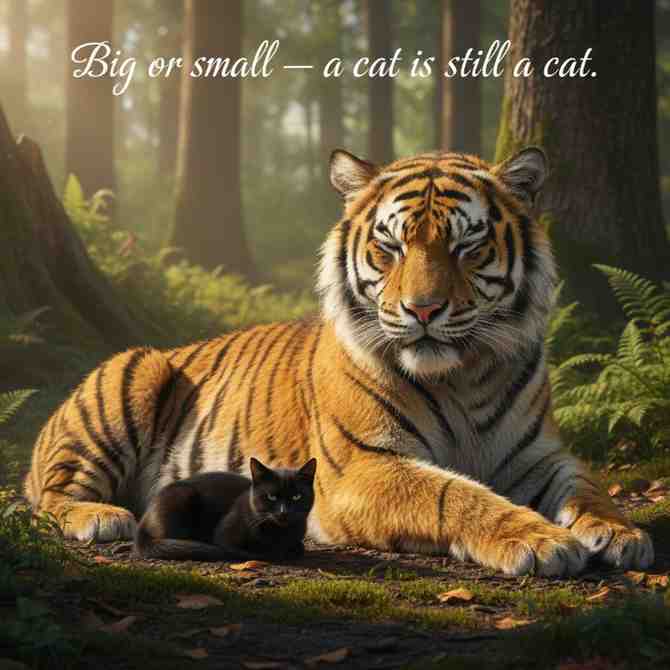
Tigers are classed as cats because they are members of the same family of animals as the domestic cat. The name of this family is Felidae; an alias for the cat family.
- Tigers and house cats are cousins
- Just as you might have a number of cousins that are taller or stronger than you, tigers are large and distant cousins to the little cats we keep at home.
- Even though they are wild and much larger, tigers share lots of common characteristics with their domestic cousins.
- They both do cat-like things
- Tigers purr, stretch, lick their fur, and play, just like your house cat.
- They hunt quietly, walk on soft paws, and have sharp claws and teeth—just like all cats do.
- Same body design
- Both have strong muscles, sharp eyes, pointy ears, and long tails.
- They both use their whiskers to feel around and have great night vision.
- Scientific name proves it
- The scientific name for a tiger is Panthera tigris.
- This name shows it belongs to the group Panthera, which also includes lions, leopards, and jaguars, collectively known as big cats.
- Examples to remember
- Lions, tigers, cheetahs, and even house cats are all members of the cat family.
- So whether it’s a tiger in the jungle or a kitten in your home—they are all cats at heart!
Top Domestic Cat Breeds That Grow Huge
Maine Coon – Largest Domestic Cat Breed (America’s Gentle Giant)

- Name of the Breed: Maine Coon
- Origin: United States (Maine), one of the oldest natural breeds in North America
- Average Weight:
- Males: 13–18 pounds (5.9–8.2 kg)
- Females: 8–12 pounds (3.6–5.4 kg)
- Average Height: 10–16 inches (25–40 cm)
- Length (including tail): Can reach up to 40 inches (1 meter)
- Life Span: 12–15 years on average
- Special Features:
- Long, thick fur and bushy tail
- Tufted ears and paws (like a lynx)
- Very gentle, intelligent, and playful
- Known as the “gentle giants” of the cat world
- Temperament: Friendly, easygoing, and good with families and kids
- Grooming Needs: Needs regular brushing due to having long fur
- Fun Fact: A Maine Coon named Barivel from Italy holds the Guinness World Record for the longest living domestic cat (over 3 feet long without the tail)!
The Science Behind Giant Cat Breeds

Genetics and Selective Breeding
Do cat breeds are larger! Breeders have selected traits favoring large size: longer bone structure and denser muscle mass. Eventually, this makes the offspring immensely larger.
Growth Hormones and Diet
While genetics play a major role in the hobby, diet also contributes. Good food with high protein content supports the growth of kittens. Growth hormones or artificial enhancers are neither ethically used nor very commonly used in the domestic cat world.
Health and Lifestyle of Large Cats
Do Larger Cats Have More Health Issues?
In general, large cat breeds tend to enjoy healthy lives, but joint issues, hip dysplasia, and heart problems can be more common due to their heavy body. Hence, regular veterinary check-ups are a must.
Largest Cats from Different Countries
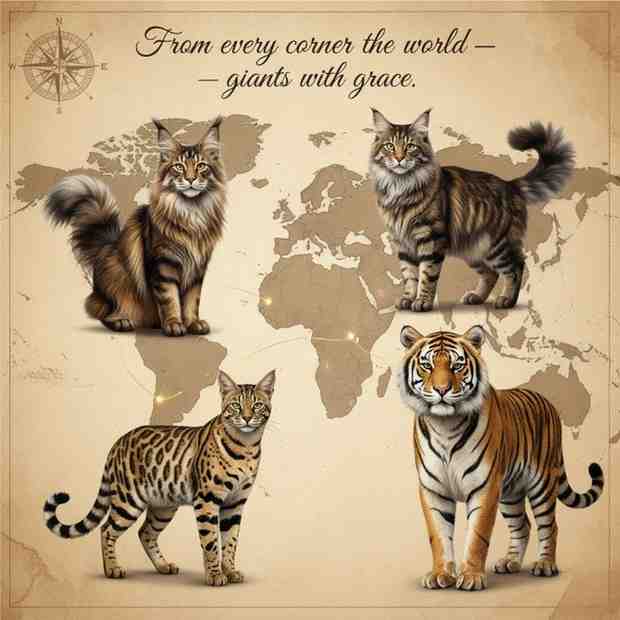
| Country | Cat Name / Type | Type | Length | Weight | Special Features |
|---|---|---|---|---|---|
| USA | Hercules the Liger | Hybrid (Lion + Tiger) | 11 ft (3.3 m) | 900 lbs (408 kg) | World’s largest cat, lion-tiger mix, has a mane |
| Italy | Barivel (Maine Coon) | Domestic | 3 ft 11.2 in (120 cm) | ~22 lbs (10 kg) | Longest domestic cat, fluffy, gentle |
| Russia | Kefir (Maine Coon) | Domestic | ~3.5 ft (106 cm) | ~28 lbs (12.7 kg) | Huge cat with dog-like appearance |
| India | Bengal Tiger | Wild | Up to 10 ft (3 m) | 500–650 lbs (225–295 kg) | National animal, bold stripes, powerful predator |
| Russia (Siberia) | Siberian Tiger | Wild | Up to 10.5 ft (3.2 m) | Up to 660 lbs (300 kg) | Thick fur, cold climate hunter |
| Africa | African Lion | Wild | Up to 10 ft (3 m) | 330–500 lbs (150–227 kg) | Social big cat, mane (males), king of the jungle |
✅ Key Highlights:
- Biggest Overall: 🏆 Hercules the Liger (USA) – Largest cat in the world
- Longest Domestic Cat: 📏 Barivel (Italy) – Almost 4 feet long
- Heaviest Domestic Cat: 🐱 Kefir (Russia) – Weighs more than most dogs
- Largest Wild Cat by Weight: 🐯 Siberian Tiger (Russia)
- Most Famous Wild Cat in Asia: Bengal Tiger (India)
- Most Social Big Cat: 🦁 African Lion (Africa) – Lives in prides
Caring for a Giant Cat at Home
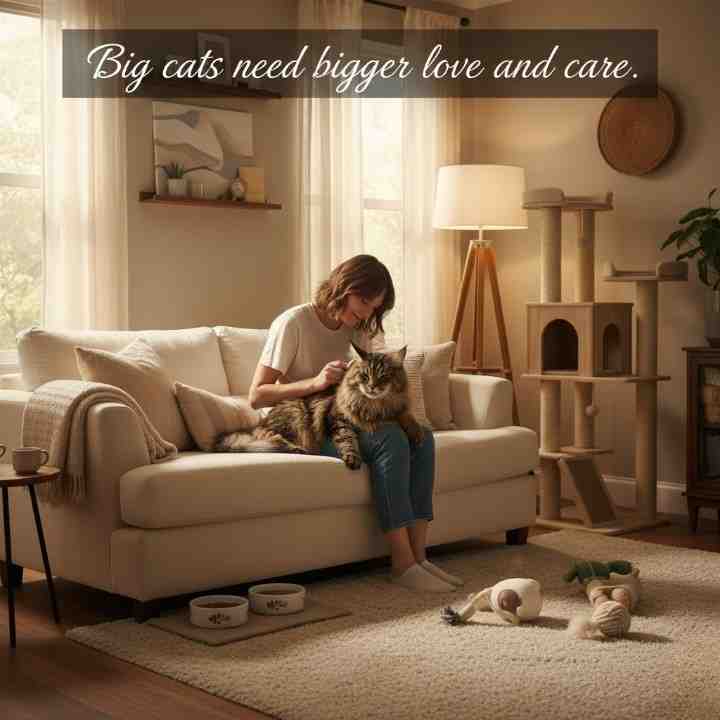
Space and Environment
| Cat Type | Living Environment | Space Needed | Climate Preference | Special Needs |
|---|---|---|---|---|
| Hercules the Liger | Captivity (Wildlife Reserve) | Very large enclosures (1+ acre per cat) | Warm, dry climate | Needs space to roam, shade, lots of food, human care |
| Siberian Tiger | Wild (Forests of Siberia) | Territories up to 100 sq. miles in wild | Cold, snowy, forested areas | Thick forests, rivers, and cold temperatures |
| Bengal Tiger | Wild (India, Bangladesh) | 20–40 sq. miles in wild | Tropical and subtropical zones | Needs water, dense cover, large prey animals |
| African Lion | Wild (African savannas) | 8–150 sq. miles for a pride | Hot, dry grasslands or savannas | Open plains, some shade, space for group hunting |
| Barivel (Maine Coon) | Domestic (Italy, home pet) | Large home space with vertical climbing | Indoors or mild outdoor weather | Needs large litter box, tall scratching posts, soft bedding |
| Kefir (Maine Coon) | Domestic (Russia, home pet) | Spacious rooms for free movement | Cooler climate preferred | Grooming needs, strong furniture, high-quality food |
📝 Summary:
- Wild big cats like tigers and lions require large, almost natural spaces within forests, grasslands, or reserves to roam..
- Hybrid cats like ligers live only in captivity and need large enclosures with constant care.
- For these big domestic-type cats like the Maine Coons, there is a bit more space required than for the normal domestics, but with sufficient care and enrichment, they can be kept in the house.
Exercise and Mental Stimulation for Giant Cats

| Cat Type | Type of Exercise | Mental Stimulation | Why It’s Important |
|---|---|---|---|
| Hercules the Liger | Walking, climbing, swimming | Interaction with trainers, puzzle feeders | Prevents boredom, supports health in captivity |
| Siberian Tiger | Hunting, roaming, climbing trees and hills | Exploring new scents, stalking prey | Mimics natural wild behavior, keeps body and brain sharp |
| Bengal Tiger | Running, swimming, hunting | Territorial marking, problem-solving with prey | Maintains survival skills and energy levels |
| African Lion | Group hunting, long walks, resting under trees | Social interaction with pride members, playful fights | Builds teamwork and keeps them socially healthy |
| Barivel (Maine Coon) | Playing with toys, jumping, chasing balls | Feather wands, food puzzles, attention from owners | Prevents obesity, keeps them curious and playful |
| Kefir (Maine Coon) | Climbing, chasing, gentle wrestling | Laser pointers, catnip toys, exploring high spots | Reduces stress, helps with muscle tone and alertness |
✅ Key Takeaways:
- Wild cats get natural exercise through hunting and roaming, and they stimulate their minds by surviving in the wild.
- Captive big cats need human-provided enrichment like toys, training, and space to move.
- Large domestic cats need playtime, toys, and interaction just like dogs — but with cat-style games.
Grooming Needs for Large Breeds
| Cat Type | Coat Type | Grooming Frequency | Tools Needed | Special Grooming Notes |
|---|---|---|---|---|
| Maine Coon | Long, thick, double coat | 2–3 times per week | Wide-tooth comb, slicker brush | Prone to mats and tangles; regular brushing prevents hairballs |
| Norwegian Forest Cat | Long, waterproof coat | 2–3 times per week | Metal comb, deshedding brush | Seasonal shedding (spring & fall); requires extra grooming then |
| Persian | Very long, fine coat | Daily | Fine-tooth comb, detangling spray | Needs frequent face cleaning and coat maintenance |
| Hercules the Liger | Short, thick coat | Occasionally (in captivity) | Soft brush, water bath if needed | In the wild they self-groom; in captivity, handlers may assist |
| Siberian Tiger | Thick, dense fur | Natural grooming (wild) | None (self-grooms in wild) | No human grooming needed unless in a zoo or sanctuary |
| African Lion | Short fur, males have manes | Natural grooming (wild) | None (self-grooms or with pride) | Male lions groomed by pride members; no human care needed in wild |
✅ Important Grooming Tips:
- Domestic large cats like Maine Coons require regular grooming to keep their coats healthy and free of knots.
- Wild big cats are self-sufficient and groom themselves in the wild. In captivity, they may need occasional help from caretakers.
- Regular grooming also helps detect skin issues, ticks, or health problems early in domestic cats.
Should You Adopt a Giant Cat?
Pros and Cons of Living With a Giant Cat
✅ Pros
| Benefit | Why It Matters |
|---|---|
| Unique Personality | Giant cats are often friendly, dog-like, and love to follow you around. |
| Striking Appearance | Their size, thick fur, and regal look always turn heads and start conversations. |
| Great Companions | Many large breeds are loyal, affectionate, and enjoy spending time with humans. |
| Fun to Play With | Their energy, curiosity, and size make playtime more interactive and entertaining. |
| Intelligent & Trainable | Some giant breeds can learn tricks and enjoy puzzle toys. |
❌ Cons
| Challenge | Why It Could Be a Problem |
|---|---|
| Needs More Space | Giant cats require more room to move, jump, and play than smaller breeds. |
| Higher Food Costs | They eat more than regular cats, so monthly expenses can be higher. |
| More Grooming Required | Long hair means more brushing and maintenance to avoid tangles and mats. |
| Stronger Claws and Paws | They can knock things over or scratch furniture more easily. |
| Litter Box Size Matters | Standard litter boxes may be too small; you’ll need a large one. |
Where to Find the Largest Cats for Adoption
1. Breed-Specific Cat Rescues
| Rescue Name | Specialty | Location/Online |
|---|---|---|
| Maine Coon Adoptions | Maine Coons & Maine Coon mixes | USA (nationwide) |
| Savannah Cat Rescue | Savannah cats & hybrids | USA (online applications) |
| Norwegian Forest Cat Rescue Groups | Norwegian Forest cats | Europe & North America |
These rescues often focus on rehoming large breeds and offer detailed care guides.
🐾 2. Local Animal Shelters & Humane Societies
- Many large cats (especially mixes) end up in local shelters.
- You can search online using filters like “large breed” or “Maine Coon mix.”
- Check Petfinder, Adopt-a-Pet, or local animal welfare websites.
🌐 3. Online Adoption Platforms
| Website | Features |
|---|---|
| Petfinder.com | Search by breed, size, age, and location |
| Adoptapet.com | Find large cats across the U.S. |
| RescueMe.org | Breed-specific rescues listed by state |
These platforms are a great way to browse hundreds of available cats and apply directly.
🐱 4. Reputable Breeders (For Specific Large Breeds)
- If you want a purebred giant cat (like a Savannah or Maine Coon kitten), look for registered breeders through:
⚠️ Note: Always ensure breeders follow ethical practices and don’t support overbreeding or poor living conditions.
💡 Tips Before Adopting a Giant Cat
- Prepare your home with larger litter boxes, sturdy furniture, and high perches.
- Ask about the cat’s health history, behavior, and grooming needs.
- Consider adopting adult cats — they often have more predictable personalities and are easier to care for.
Expect to pay
Purchase or Adoption Cost
| Breed | Adoption Fee (Shelter/Rescue) | Breeder Price (Registered) |
|---|---|---|
| Maine Coon | $100 – $300 | $800 – $2,000+ |
| Savannah Cat | $150 – $500 | $1,000 – $20,000+ (F1–F5 gens) |
| Norwegian Forest Cat | $100 – $300 | $700 – $1,500+ |
| Ragdoll | $100 – $400 | $800 – $2,500+ |
| Chausie (hybrid) | Rare via adoption | $1,000 – $5,000+ |
📝 Note: Adoption is always more affordable, and you’re giving a cat a second chance. Breeder prices depend on bloodlines, generation (especially in hybrids), and show quality.
💡 Additional Costs to Consider
- Initial setup: Beds, scratching posts, litter box, food/water bowls (~$100–$300).
- Spaying/neutering: If not already done (~$100–$300).
- Emergency vet bills: Keep a savings buffer or insurance.
✅ Pro Tip:
Larger cats may require stronger furniture, bigger carriers, and more food, so they cost slightly more to maintain than average cats — but the joy they bring is often worth every penny!
Monthly Expenses to Keep Giant Cats
| Expense Category | Estimated Monthly Cost | Details |
|---|---|---|
| High-Quality Cat Food | $30 – $100 | Giant cats eat more and need protein-rich diets |
| Cat Litter | $15 – $50 | Larger cats = bigger litter boxes = more litter used |
| Routine Vet Care | $10 – $50 | Monthly average for annual checkups, vaccination, and health supplements |
| Grooming Supplies | $5 – $20 | Brushes, shampoos, and fur maintenance kits |
| Toys & Enrichment | $5 – $30 | Good quality toys, scratching posts, climbing trees |
| Pet Insurance (Optional) | $20 – $70 | Helps with emergencies and long-term care |
| Treats & Supplements | $5 – $25 | For training and health |
| Emergency Fund Savings | $10 – $50 | Sometime due to emergency, monthly savings for unexpected vet visits |
📊 Total Estimated Monthly Cost:
👉 Minimum: ~$120/month
👉 Maximum: ~$285/month (or more depending on lifestyle and health needs)
✅ Tips to Save Money:
- Better to buy food and litter in bulk.
- Learn basic grooming tips for your cat at home instead of using a professional.
- Use enrichment toys that are reusable (like puzzle feeders).
- Compare pet insurance plans to find affordable coverage.
Countries Where Giant Cats Are Allowed as Pets
Allowed (With or Without Restrictions)
| Country | Allowed Giant Cat Breeds | Special Rules or Notes |
|---|---|---|
| United States | Maine Coon, Savannah, Norwegian Forest Cat, etc. | F1–F4 Savannahs may be banned in some states (e.g., New York, Hawaii). |
| Canada | All domestic breeds allowed | Hybrid or wild cats may be restricted by province (e.g., Ontario, Alberta). |
| United Kingdom | Maine Coon, Norwegian Forest Cat, Ragdoll | Savannahs allowed up to F4 generation; Servals need a special license. |
| Australia | Most large domestic breeds | Savannah cats are banned due to environmental risk. |
| Germany | Domestic giants and hybrids allowed | Ownership of hybrids may require registration. |
| Russia | All large domestic cats allowed | Few restrictions on hybrid or exotic breeds. |
| South Africa | Savannahs, Maine Coons, Chausie, etc. | Wild cat species need a permit or are banned. |
| France | Domestic and F5+ hybrid cats allowed | Earlier generation hybrids may require licensing. |
| United Arab Emirates (UAE) | Domestic and some hybrids | Exotic or wild cats (like Servals) are banned for private ownership. |
| India | Domestic large cats allowed | Exotic breeds like Savannah or Serval are generally not permitted. |
❌ Countries With Strict Bans or Heavy Restrictions
| Country | Details |
|---|---|
| Australia | Savannah cats are banned completely. Only domestic cat breeds are allowed. |
| New Zealand | Due to strict biosecurity laws; exotic cats are usually not allowed. |
| Hawaii (USA) | Bans hybrid cats like Savannahs entirely. |
| Norway | Restricts hybrids; only standard domestic cats are permitted. |
| Singapore | Due to strict pet laws; hybrid or large exotic breeds usually not allowed. |
📝 Main Points:
- Domestic giant cat breeds (like Maine Coons, Ragdolls, Norwegian Forest Cats) are legal in most countries.
- Hybrid cats (like early-generation Savannahs or Chausies) may be restricted or require special permits.
- Exotic/wild cats (like Servals, Caracals, or Ligers) are often illegal or need special wildlife licenses.
Most Frequently Asked
What is the largest cat in the world?
The liger (lion + tigress hybrid) is the largest cat in the world.
How big can a liger grow?
A liger can weigh over 900 pounds (400+ kg) and reach 12 feet (3.6 m) in length when standing on hind legs.
Is the liger found in the wild?
No, ligers are not found in the wild; they are bred in captivity.
What is the largest wild cat species?
The Siberian tiger (also called Amur tiger) is the largest wild cat, weighing up to 660 lbs (300 kg).
How long can a liger live?
Ligers typically live 15 to 20 years in captivity, similar to other big cats
Are ligers fertile and can they reproduce?
Female ligers are often fertile, but male ligers are usually sterile.
Do ligers have health problems?
Yes, due to hybridization, ligers may face genetic and health issues like growth disorders and organ problems.
What do ligers eat?
They eat a carnivorous diet: mainly raw meat such as beef, chicken, or fish.
Are ligers dangerous?
Yes, like all big cats, ligers are wild and powerful predators, requiring trained handlers in captivity.
Where can ligers be seen?
Ligers can be seen in some private zoos and wildlife parks, mostly in the USA, China, and a few other countries.
How many Ligers are resent in the world?
As of now, there are estimated to be around 100 ligers in the world.
In which countries Ligers are present?
Countries Where Ligers Are Found
United States – Home to the largest number of ligers, found in private zoos, animal parks, and sanctuaries.
China – Several ligers are kept in wildlife parks for public display and research.
Russia – A few ligers have been bred and kept in zoos.
India – Very rare, but reports of a few in private or government zoos exist.
South Korea – Some ligers are held in captivity for exhibition purposes.
Germany – Occasionally found in private collections or zoos.
United Arab Emirates – Some exotic animal collectors and private zoos may keep ligers.
Thailand – A few wildlife parks have bred ligers in the past.
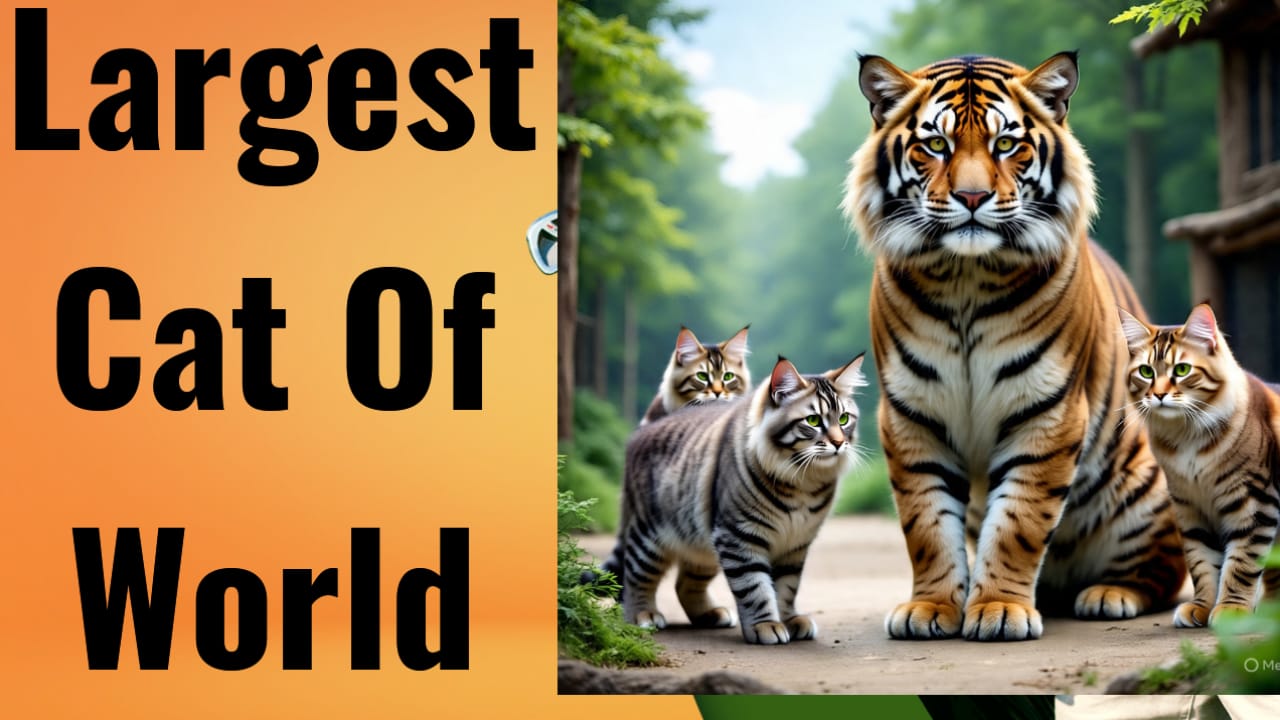
Very good information
Very nice and informative article
I think the admin of this website is in fact working hard in favor
of his site, for the reason that here every stuff is quality
based information.
continuously i used to read smaller articles or reviews which as well
clear their motive, and that is also happening with
this article which I am reading here.
Great blog here! Also your website loads up very
fast! What host are you using? Can I get your affiliate link to your host?
I wish my web site loaded up as quickly as yours lol
Wow that was strange. I just wrote an incredibly long comment but
after I clicked submit my comment didn’t appear.
Grrrr… well I’m not writing all that over again.
Anyhow, just wanted to say great blog!